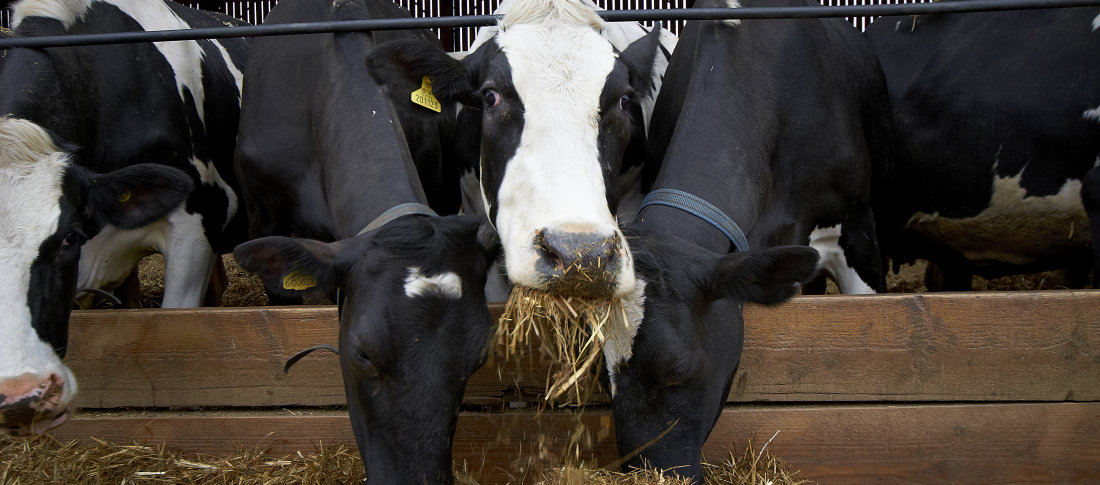A healthy rumen isn’t just a good way to avoid digestive upsets. Rumen health is a good yardstick of overall cow well-being. Without a well-functioning rumen, your dairy herd is open to all manners of costly health complications.
What is the rumen and why is it important?
The rumen plays an essential role in a cow’s digestive process. Think of the rumen as a large fermentation chamber, bristling with good bacteria that break down food into smaller components that can later be absorbed and used as energy.
What are the risks associated with the rumen?
Two things are vital to good rumen function: a healthy microbial population and a suitable pH (ideally above 6.5). Without these, the rumen becomes less and less efficient at digestion of feed. This leaves cows susceptible to health complications such as acidosis and laminitis.
So, what are the risk factors for rumen health?
Rumen-active fats
All cows need fat in their diets to stay fit, productive and healthy. But, as the saying goes, too much of anything is bad. Diet fat concentration can be increased by adding vegetable or fish oils, or higher fat ingredients such as brewer’s or distiller’s grains. However, fat/oil from these sources is released in the rumen and is described as ‘rumen-active’ and can lead to problems.
Avoid the oil slick
Rumen-active oils can create a ‘slick’ that physically coats the fibre in the rumen and prevents bacteria from breaking down food - decreasing fibre digestion.
Unsaturated fatty acids in these oils can be toxic to some species of rumen bacteria. Fewer rumen bacteria means reduced fibre digestion, reduced rumen function, and reduced feed efficiency.
Trans fats
Unsaturated fatty acids provide the raw materials for the production of trans fatty acids that can dramatically reduce the fat content of a cow’s milk.
How can you keep the rumen healthy?
Keeping the rumen healthy is all about offering a well-balanced ration. And it’s worth the effort to get it right. Because when you do, you can expect increased feed intake and improved feed efficiency. That means more milk produced at lower cost. So, how’s it done?
Consistent supply of dietary nutrients
For optimal rumen pH and growth of rumen bacteria, you should aim to keep nutrient intake as balanced and consistent as possible. Rumen microbes adapt to dietary modifications slowly, taking up to six weeks to fully adjust to a change of feeds. Make changes gradually to allow your herd’s microbial populations to adapt.
Plenty of clean drinking water
Dairy cows need to guzzle a lot of water - up to 100 litres or more per day. Ensure your herd has access to plenty of clean drinking water in key areas such as paddocks, feedout areas and at the entry and exit points of the dairy. Cows are particularly thirsty after milking.
Incorporate rumen-protected fats
Dairy cows require supplementary fat in their diet to improve milk yield, milk fat % and overall performance. But, as above, increasing intake of rumen-active fats can cause health complications.
That’s where rumen-protected fats come in. These dietary supplements increase fat intake without increasing the acid load in the rumen, passing through without impacting the efficient digestion of fibre. Megalac is an ideal supplement to increase energy supply in early lactation diets and has been proven to improve fertility.
How much rumen-active fat can be used in diets?
Calculating the fat percentage of a cow’s diet can be complex. Dairy cows may require up to 6-8% fat in the diet dry matter (15-20% of the metabolisable energy of a dairy cow’s diet should come from fat). Yet only around 3-5% rumen-active fat in the dry matter can be tolerated by the rumen before problems (discussed above) begin to develop. Additional fat requirements are best met with rumen-protected fats, such as Megalac.
Over to you...
A healthy rumen makes for a healthy cow. Carefully monitoring your herd’s intake of rumen-active fats and supplementing diets with rumen-protected fats as required is the best way to promote rumen health and improve the productivity of your herd. For more information visit our website.
